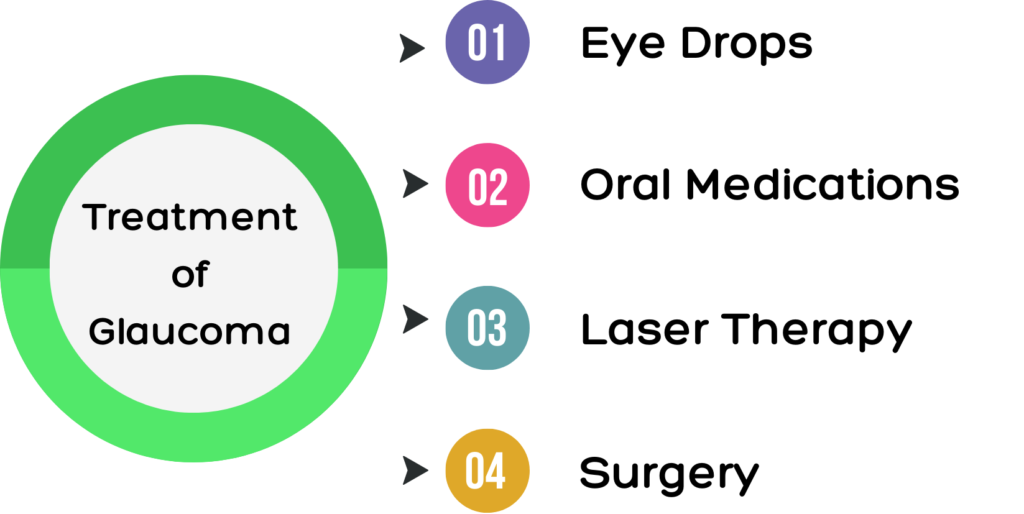Imagine slowly going blind without any warning signs until it’s too late. That’s the scary truth for the millions of people who have Glaucoma, which is often called the “silent thief of sight.” Glaucoma, also called Kalamotia in parts of Asia, is an eye condition that affects the eye’s optic nerve and often causes permanent vision loss. This blog aims to shed light on Glaucoma, its detection, and effective management to preserve vision and improve the quality of life for those affected.
Understanding Glaucoma or Kalamotia
Glaucoma is a complex eye disease that can affect people of all ages, but it is more common in individuals over the age of 60. It is thought that more than 14 million Indians have Glaucoma as of date, and a staggering number of 85.6 million people worldwide suffer from Glaucoma. As the population ages, the numbers are likely to go up globally.
The optic nerve sends information about what the eye sees from the eye to the brain. In Glaucoma, the visual nerve gets hurt bit by bit over time. High intraocular pressure (IOP), or pressure inside the eye, is usually to blame. But some kinds of Glaucoma can happen even when IOP is normal or low. This makes it a complicated disease with many subtypes.
Diagnosis and eye tests of Glaucoma or kalamaotia
As conveyed in this blog earlier, Glaucoma or Kalamotia often goes undetected in its early stages, earning its nickname as the “silent thief of sight.” Regular comprehensive eye exams are crucial for early detection, especially for individuals at higher risk, such as those over 40, individuals with a family history of Glaucoma, and people with certain medical conditions like diabetes.
During an eye exam, the ophthalmologist or optometrist will perform several tests to assess the health of the eyes and the optic nerve. These tests may include:

- Tonometry: This measures the intraocular pressure (IOP) to check for increased pressure, a key indicator of Glaucoma.
- Ophthalmoscopy: This allows the doctor to visualize the optic nerve and check for any signs of damage.
- Perimetry (Visual Field Test): This test maps the visual field to identify any areas of vision loss or defects.
- Gonioscopy: It examines the drainage angle of the eye to determine if it is open or closed.
Types of Glaucoma
Primary Open-Angle Glaucoma (POAG): This is the most common type of Glaucoma. It develops gradually and often without any noticeable symptoms until peripheral vision is significantly affected. When the patient notices the vision loss, a substantial amount of optic nerve damage may have already occurred.
Angle-Closure Glaucoma: This type is characterized by a sudden increase in IOP due to a sudden blockage of the eye’s drainage angle, leading to a rapid and painful onset of symptoms. This is considered a medical emergency.
Normal-Tension Glaucoma: Even though the IOP is in the normal range, the Optic nerve of the eye is still found damaged in this type of Glaucoma.
Congenital Glaucoma: This relatively rare form of Glaucoma develops at birth or shortly after. It is caused by abnormal eye development, leading to impaired fluid drainage from the eye.
Treatment of Glaucoma
While Glaucoma cannot be cured, early detection and appropriate management can significantly slow down its progression and preserve vision. The main goal of treating Glaucoma is to lower IOP to protect the optic nerve from more damage. Treatment options may include:

- Eye Drops: These are the most common initial treatment for Glaucoma. They reduce IOP by decreasing fluid production in the eye or improving its drainage.
- Oral Medications: In some cases, oral medications may be prescribed to lower IOP, especially if eye drops alone are insufficient.
- Laser Therapy: Laser trabeculoplasty and other laser procedures can improve fluid drainage in the eye, reducing IOP.
- Surgery: When medications and laser therapy are ineffective, surgical procedures may be recommended to create a new drainage channel or reduce fluid production.
Living with Glaucoma (Kalamotia)
Living with Glaucoma requires ongoing management and regular follow-ups with eye care professionals. Patients must adhere to their prescribed treatment plan and attend regular eye exams to monitor the disease’s progression. Beyond medical intervention, certain lifestyle modifications can help support glaucoma management. These may include:
- Healthy Diet: A balanced diet with lots of fruits and vegetables and a few saturated fats can help keep your eyes healthy.
- Exercise: Regular physical activity or exercises can help maintain healthy intraocular pressure.
- Stress Management: Managing stress can positively impact eye health, as elevated stress levels can sometimes worsen Glaucoma.
- Avoiding Smoking and Excessive Alcohol: These habits can worsen Glaucoma and should be avoided.
Blog Summary
Glaucoma is a severe eye condition that demands attention, as it silently steals away vision if left unchecked. Regular eye exams, early detection, and proper management are vital in preserving vision and improving the quality of life for those affected. Understanding the risk factors, types of Glaucoma, and available treatment options empower individuals to take proactive steps in protecting their eyesight from the silent thief of sight. If you or your loved ones fall into the higher-risk category, make an appointment with your eye care professional today and take control of your ocular health. Remember, your eyesight is precious, and prevention is always better than cure. Dr Manpreet’s Global Eye Hospital in Patiala is a NABH-approved Eye super speciality hospital with a dedicated Glaucoma specialist to treat and manage Glaucoma or Kalamotia as it is locally referred.

